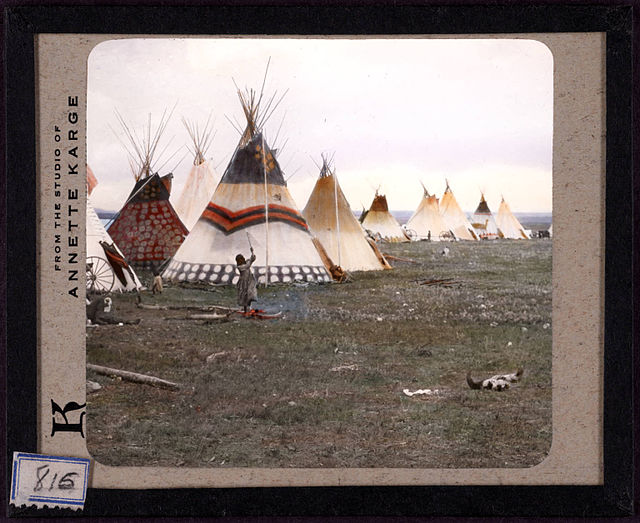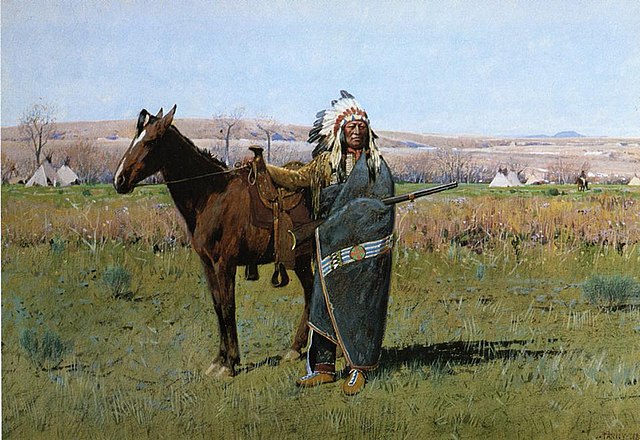Plains hide painting is a traditional North American Plains Indian artistic practice of painting on either tanned or raw animal hides. Tipis, tipi liners, shields, parfleches, robes, clothing, drums, and winter counts could all be painted.
Sioux parfleche, ca. 1900, Gilcrease Museum
Kiowa parfleche, ca. 1890, Oklahoma History Center
Buffalo hide painting of Pawnees battling the Villasur expedition
Siksika tipis in Montana, photo by Walter McClintock
Plains Indians or Indigenous peoples of the Great Plains and Canadian Prairies are the Native American tribes and First Nation band governments who have historically lived on the Interior Plains of North America. While hunting-farming cultures have lived on the Great Plains for centuries prior to European contact, the region is known for the horse cultures that flourished from the 17th century through the late 19th century. Their historic nomadism and armed resistance to domination by the government and military forces of Canada and the United States have made the Plains Indian culture groups an archetype in literature and art for Native Americans everywhere.
Stumickosúcks of the Kainai. George Catlin, 1832
Spotted Tail of the Lakota Sioux
Bison hunt under the wolf-skin mask, George Catlin, c. 1832
Early Native American tribal territories color-coded by linguistic group








